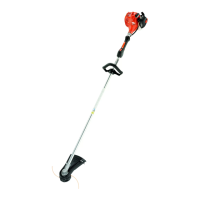
Do you have a question about the Echo SRM-225 - 12-09 and is the answer not in the manual?
| Engine Displacement | 21.2 cc |
|---|---|
| Cutting Swath | 17 inches |
| Shaft Type | Straight |
| Starting System | i-30™ Starting System |
| Engine Type | 2-stroke |
| Handle Type | Loop |
| Fuel Capacity | 14.9 fl. oz (440 ml) |
Read and understand this manual for operation, starting, stopping, maintenance, storage, and assembly.
Read and understand this manual for safe operation, explaining hazards and safety measures.
Explains safety alert symbols, keywords, and their meanings for safe operation.
Lists and describes various international symbols used on the product and manual.
Advises on personal condition and necessary safety gear for operating the unit safely.
Recommends wearing eye, hand, and hearing protection during operation for safety.
Details appropriate clothing and precautions for hot weather and extended operation.
Explains RSI/CTS risks and prevention methods like posture, breaks, and exercises.
Advises clearing work area, maintaining a firm grip, and a solid stance.
Warns to keep exhaust area clear of debris and avoid contact with hot surfaces.
Use approved attachments; check for loose parts, damaged shields, and secure cutting attachments.
Keep clear of moving parts; stop engine before servicing; check fuel system for leaks.
Details emission control systems and product emission durability compliance periods.
Locate, ensure legibility, and understand instructions on safety decals on the unit.
Indicates locations and part numbers for Hot Decal (muffler) and Shaft Decal.
Details controls like throttle, stop switch, choke, and systems like fuel and ignition.
Covers the cutting head, line advance, cut-off knife, and debris shield.
Includes power head, drive shaft, gear housing, and recoil starter.
Instructions for installing the plastic debris shield for nylon line operation.
Steps for securely installing the nylon line head onto the shaft.
How to advance trimmer line and where to find replacement instructions.
Instructions for removing the nylon line head from the shaft.
Instructions for positioning and securing the front handle for comfortable operation.
Critical warnings regarding moving parts, engine exhaust, and fire hazards during operation.
Guide for setting up the trimmer/brush cutter for different blade types and required parts.
Lists required parts for Grass/Weed and Brush/Clearing blades.
Match blade type to material, ensure sharpness to prevent injury.
Describes Plastic/Nylon, 8-Tooth, 80-Tooth, and 22-Tooth blades and their uses.
Advises using a harness for all operations to reduce fatigue and enhance safety.
Use unmixed, fresh fuel; stale fuel can cause starting issues or engine damage.
Do not use alternative fuels like E-15, E-85; they can cause performance problems and damage components.
Specifies using 89 Octane unleaded gasoline and ISO-L-EGD/JASO FC/FD certified two-stroke oil.
Fuel is highly flammable; use extreme care when mixing, storing, or handling.
Step-by-step guide for mixing gasoline and two-stroke oil in the correct ratio.
Guidelines for storing fuel and importance of shaking before use due to potential separation.
Keep movable parts clear of ground and obstacles; attachment operates immediately.
Details steps including stop switch, choke, purge bulb, recoil starter, and throttle use.
Steps for warm start, similar to cold start but without closing choke.
Instructions for stopping the engine using the stop switch or choke in case of failure.
Keep clear of moving parts, stop engine, disconnect spark plug before maintenance.
Defines Skill Level 1 (easy) and Skill Level 2 (moderate) for maintenance tasks.
Table outlining maintenance procedures, required skill, and intervals for various components.
Instructions for cleaning or replacing the air filter, including choke use and filter condition checks.
Steps to remove and replace the fuel filter using a wire hook and approved fuel container.
Instructions for removing, cleaning, replacing, and gapping the spark plug.
Explains how cooling air prevents overheating; keeping fins clear is normal maintenance.
Steps to clean dirt from cylinder fins and debris from grids using brushes.
Level 2 maintenance for cleaning or replacing the spark arrestor screen.
Steps to remove, clean, and replace the spark arrestor screen and gaskets.
Instructions for cleaning carbon deposits from the cylinder exhaust port using non-metal tools.
New engines require break-in; idle speed can be adjusted as needed.
Factory adjustment for up to 1,100 ft; dealer adjustment may be needed above.
How to check and adjust idle speed using the idle screw, ensuring no movement at idle.
Instructions for cleaning and checking/adding grease to the gear housing.
Steps for lubricating the flexible cable within the drive shaft housing.
Guide for aligning and installing the spool onto the drum and locking it.
How to insert the nylon trimmer line into the holes on the sides of the drum.
Instructions for holding the drum securely and turning the spool to wind the line.
How to cut the remaining line loop to separate it into two pieces.
Inspect blades for damage; sharpen teeth at a 30-degree angle using a flat file.
Caution against overheating teeth with grinders; check and renew tooth radius.
Troubleshooting steps for issues like no fuel at carburetor or cylinder, or no spark.
Troubleshooting steps for problems like fuel vent plugged, dirty spark plug, or carburetor issues.
Troubleshooting for when the engine fails to crank, indicating an internal engine problem.
Do not store in enclosures with fuel fumes; keep exhaust area clear of debris.
Includes stopping the switch, cleaning, lubrication, tightening, draining fuel, and cylinder oiling.
Lists detailed technical specifications for the SRM-225 model, including dimensions, engine details, and capacities.
Notes compliance of the spark ignition system with Canadian standard ICES-002.
Outlines ECHO's limited warranty for products sold in the USA and Canada.
Details warranty periods for residential, commercial, and rental applications, including exceptions.
Details warranty for purchased repair parts, short blocks, and accessories.
Lists causes of damage not covered by warranty, such as improper oil/fuel use or neglect.
Explains the emission control system warranty coverage for 2 years or the length of the ECHO warranty.
Details owner's responsibilities for maintenance and presenting the unit for service.
Lists applicable emission-related parts covered by the warranty and those not covered.
Information on obtaining genuine ECHO parts and locating authorized service dealers.
Contact information for support and importance of warranty registration.
Information on how to obtain replacement manuals and safety videos.
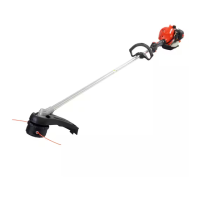
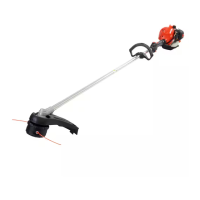
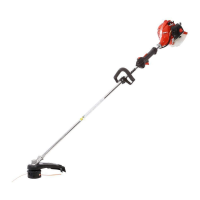
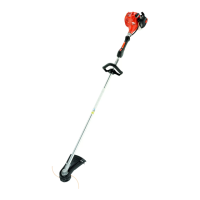
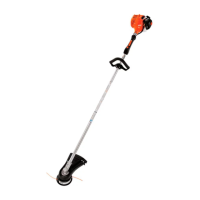
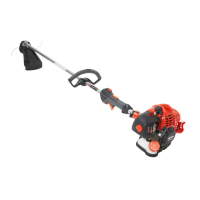
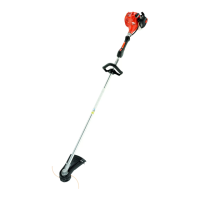
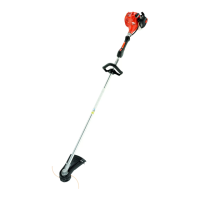

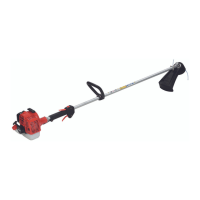
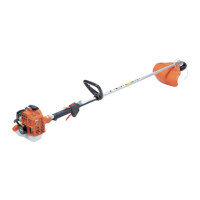

